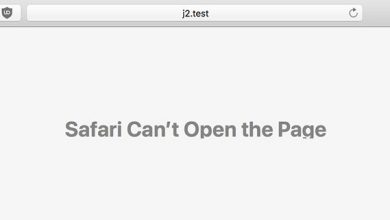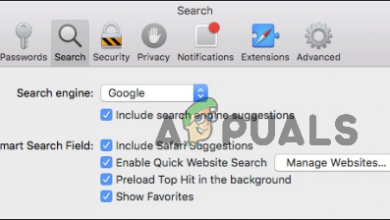How to Fix “Webkit Encountered an Internal Error” on Safari?
Webkit encountered an Internal error might be caused by the issues with the Safari browser or the device’s network configurations. Safari issues may range from a conflicting Private Relay feature to corrupt history/website data of the browser. The error occurs when you try to open a website in the Safari browser, but the browser fails to do so by showing the error under discussion (sometimes with a WebKitErrorDomain). This error is reported across all Apple devices like Macs, iPhones, iPads, etc. In some cases, other apps that use the Safari API on Apple devices (like Facebook, Instagram, etc.) also showed the error.

The following are found to be the main factors to cause the WebKit internal error:
- Outdated Device’s OS: If your device’s OS (like iOS for an iPhone) is missing the latest patches from Apple, then its incompatibility with other modules (especially Safari) may not let a website properly load into the browser, thus causing the WebKit internal error.
- Corrupt History and Website Data of the Safari Browser: You may encounter a WebKit internal error on Safari if the browser’s history and website data (like cookies) are corrupt. Due to this corruption, the communication between the browser and websites may be glitched out and cause the error at hand.
- iCloud’s Private Relay Feature: The iCloud’s Private Relay feature uses a double relay methodology to mask your IP from ISPs and websites. If the data packets exchanged between the Safari browser and the website have become corrupt due to this relaying framework, then that could result in the WebKit error.
- HTTP/3 Protocol of Safari: WebKit may show an internal error on Safari if the browser is trying to communicate to a website on the HTTP/3 protocol, but the website is failing to apply the HTTP 3 protocol properly, then that could cause communication incompatibility between the website and Safari, resulting in an internal error of the WebKit on Safari.
1. Perform a Restart of the Devices
A temporary glitch in your device’s OS could lead to the WebKit internal error on Safari or apps based on the Safari API, and restarting your devices may clear the issue.
- Firstly, restart your device and check if it is operating fine.
- If not, power off your device (like an iPhone, iPad, Mac, etc.) and remove its power cable (if applicable, like on a Mac) from the power source.
- Now power off your networking devices (like a router, Wi-Fi extenders, etc.) and remove their power cables from the respective power source.
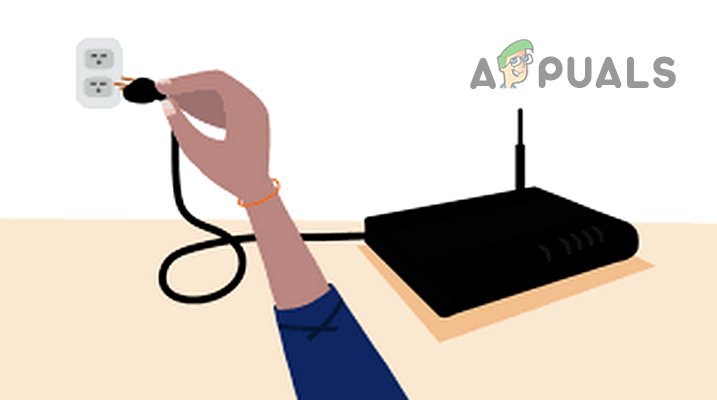
Unplug Router from the Power Source - Then wait a minute, plug back the router’s power cable, and power it on.
- Once the router is properly powered on, power on your device (make sure to plug back the power cable if applicable), and once properly powered on, check if it is clear of the WebKit internal error.
- If not, power off your device (like an iPad) and keep it off for an extended time like overnight.
- Afterward, power your device and check if its WebKit internal error is cleared.
2. Update the Device’s OS to the Latest Build
If your device (Mac, iPhone, iPad, etc.) OS is missing its latest updates; it may have become incompatible with the other OS modules (like the Safari browser), which may lead to the internal error of WebKit. In such a case, updating the device’s OS to the latest build may clear the WebKit error under discussion. For elucidation, we will discuss the process of updating the iOS of an iPhone to the latest build. Before proceeding, connect your iPhone to a Wi-Fi network and then fully charge the phone.
- Launch the Settings of your iPhone and select General.

Open General Settings of iPhone - Now locate the Software Update option and tap on it.
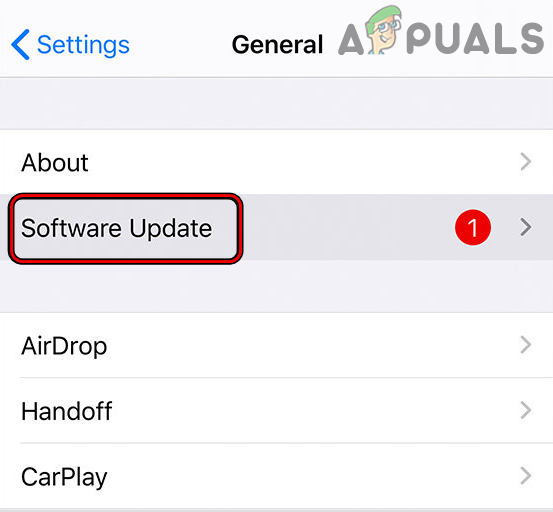
Update Software of iPhone - Then check if an iOS update is available. If available, download the iOS update, and once downloaded, tap on Install.
- Now, wait till the update installs, and once done, restart your phone upon restart, and check if Safari is clear of the WebKit encountered an error.
3. Disable the VPN on the Device
If your device or Safari web traffic is routed through a VPN, the VPN’s interference with the device’s web traffic may result in the WebKit error. Disabling the device’s VPN or browser’s VPN extension may resolve the issue. For better interpretation, we will go through the process of disabling a VPN on an iPhone. The Cloudflare Warp is reported to cause the WebKit error.
- Launch the Settings of the iPhone and tap on the General option.
- Now locate VPN and open it.
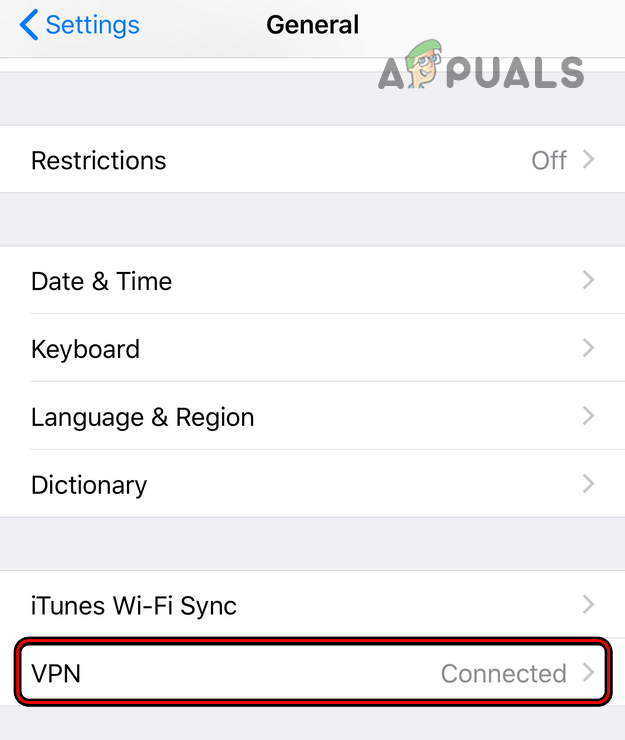
Open VPN in General Settings of iPhone - Then disable the VPN connection by toggling its switch off and relaunching the Safari browser.
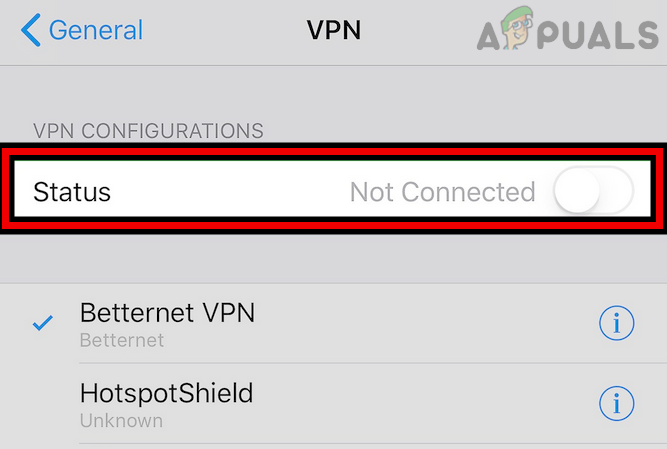
Disable VPN in the iPhone Settings - Upon relaunch, check if the WebKit error is cleared.
4. Boot Your Device into the Safe Mode
If certain caches of your device are corrupt or another app/utility is interfering in the proper execution of the modules essential for the operation of the Safari browser, then that could also cause an internal WebKit error. In this context, booting your Apple Device in the Safe Mode (as some caches will reset and execution of third-party apps will be blocked) may resolve the issue. For illustration, we will go through the process of booting a Mac into its Safe Mode.
- Power off your Mac, and once powered off, power it on but immediately hold the Shift key.
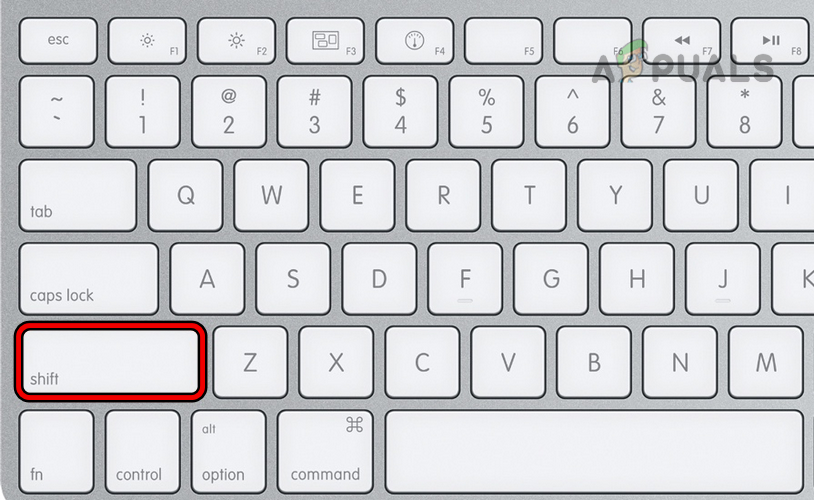
Hold the Shift Key While Powering On Mac to Boot into the Safe Mode - Keep a hold of the Shift key until the login screen is shown, and then release the key.
- Then log in using your credentials and if asked to, log in again.
- Now head to the Apple menu > About This Mac > System Report > System Information > System Software Overview and check the Boot Mode.
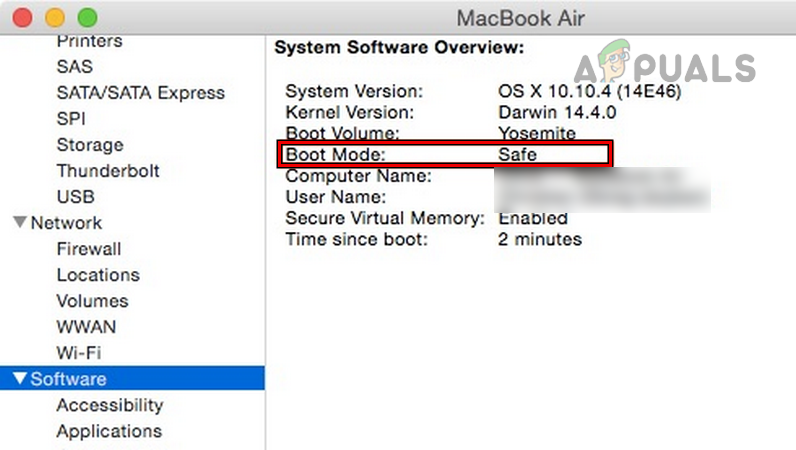
Check if the Mac Has Booted into the Safe Mode - If it is showing Safe Mode, your Mac has booted in the Safe Mode; otherwise, retry the steps above.
- Once in the Safe Mode, launch Safari and check if its WebKit internal error is cleared.
- If so, boot your Mac into normal mode and launch Safari while holding the Shift key.
- Now head to the problematic website and check if it is loading normally in Safari.
- If not, check your Mac’s startup items to find the problematic app/utility (like an ad blocker or content blocker). If found, you may disable it or remove it from your Mac (if not essential) to clear the WebKit internal error.
5. Disable the Private Relay Feature
The private Relay feature is a privacy feature added to Apple devices through iCloud. This feature uses a double relay framework to mask a client’s IP from ISP and website. If a website is not compatible with this privacy feature or if the Safari browser is failing to parse the data packet from the relay framework properly, then that could lead to the Webkit internal error. In this scenario, disabling Apple’s Private Relay feature may resolve the issue. For elucidation, we will go through the process of disabling the Private Relay feature on an iPhone.
- Go to your iPhone Settings and tap on your Apple ID/name.
- Now head to iCloud and select Private Relay.

Disable Private Relay in the iCloud Settings of Your iPhone - Then disable the Private Relay feature by toggling its switch to the off position and restart your PC afterward.
- Upon restart, check if the phone’s WebKit internal error is cleared.
If the issue persists, head to the problematic website, and when it shows the WebKit internal error, click anywhere on the page (not in the address bar or on a link), type the following, and then check if the issue is resolved:
thisisunsafe
6. Disable the Private Wi-Fi Address of the Device
Apple devices are equipped with a Private Wi-Fi Address feature which allows your Apple device to connect to different Wi-Fi networks by using different Mac addresses to mask your online activity from ISPs or profiling your network activity based on the device’s Mac address.
You may encounter the error underhand if the Private Wi-Fi Address feature hinders the browser’s communication with websites. In such a case, disabling the Private Wi-Fi Address feature of the device may solve the problem. For illustration, we will discuss the process of disabling the Private Wi-Fi Address feature for an iPhone.
- Go to your iPhone’s Settings and open Wi-Fi.
- Now tap on the i (information) icon for the problematic network and disable the Private Wi-Fi Address by toggling its switch to the off position.

Disable Private Wi-Fi Address on the iPhone - Then relaunch the Safari browser and check if it is working fine.
7. Disable HTTP 3 Feature of the Safari Browser
HTTP 3 is still in its early days (despite being in development for years, but standards take decades to mature) and experimental. If the Safari browser fails to communicate with a website on HTTP/3 protocol properly, then that could lead to the internal error of the WebKit. In this case, disabling the HTTP/3 feature of the Safari browser may resolve the issue. For illustration, we will go through the process of disabling the HTTP/3 protocol on a Mac.
- Launch the Safari browser and expand its Develop menu.

Open Experimental Features of Safari - Now select Experimental Features and untick the HTTP/3.

Disable HTTP 3 in the Safari Experimental Features - Then relaunch the Safari browser and check if it is clear of the Webkit internal error.
8. Reset Experimental Features of the Safari Browser to the Defaults or Disable Them
Apple uses experimental features in the Safari browser to test new additions to the browser before making it part of the default browser installations. You may face the WebKit error if any customization of the experimental features is hindering the browser’s ability to load the website properly or if the experimental features are not compatible with the websites you are trying to visit. In this case, resetting the Safari’s Experimental Features of the Safari browser to the defaults or disabling them may solve the problem. For elucidation, we will go through the process of Safari’s experimental features on an iPhone.
- Go to Settings of your iPhone and select Safari.
- Now open Advanced and select Experimental WebKit Features.
- Then scroll down to the bottom and tap on Reset All to Defaults.
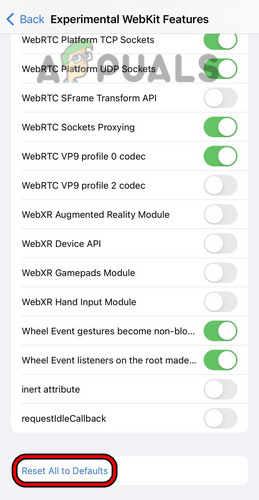
Reset All the Safari Experimental Features to Defaults - Now relaunch the Safari browser and check if it is clear of the WebKit issue.
- If not, head to Experimental WebKit Features by repeating steps 1 to 2 and then disable each option shown there.
- Now relaunch the Safari browser and check it is operating normally.
If the issue persists, check if turning off the search engine suggestions or switching to a different search engine in Safari clears out the WebKit error.
9. Clear History and Data of the Safari Browser
This error might be shown if the safari’s history/data is corrupt, and due to this corruption, the Safari browser is failing to access components essential for its operation, hence the error. Here, clearing the history and data of the Safari browser may clear the WebKit error. For illustration, we will go through the process of clearing the history and data of Safari on an iPhone. Before proceeding, back up/note down essential browser info like bookmarks, website logins, etc.
- Launch the Safari browser and head to its Settings.
- Then locate the Clear History and Data and tap on it.
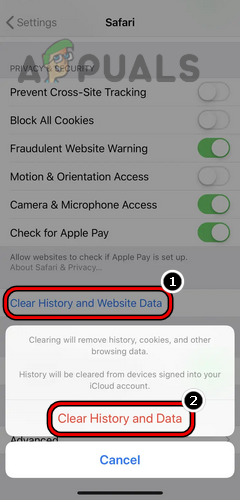
Clear History and Website Data of Safari on iPhone - Now confirm to clear the data and history of your Safari browser.
- Then restart your iPhone and check if the WebKit error is cleared upon restart.
If that does not work, then check if the problematic website works fine in the Private Browsing mode of Safari. If so, you may disable all the browser extensions and enable them one by one to find the problematic one. Once found, you may disable it (if essential); otherwise, remove it from the Safari browser.
10. Create a New User on Your Device
If your user profile on the device is corrupt, that could lead to the WebKit internal error as the Safari browser fails to access the OS modules essential for the browser’s operation. Creating a new user on your device may solve the WebKit problem. For illustration, we will go through creating a new user on a Mac. Keep in mind these steps can only be taken with an administrator account on the Mac.
- Go to your System Preferences and open Users & Groups.
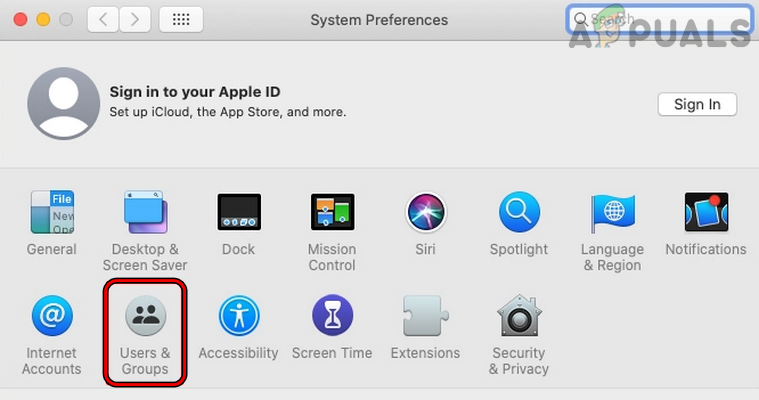
Open Users & Groups in the Mac’s System Preferences - Now, near the bottom left, click on the padlock icon and enter your administrator password if asked to.
- Then click on the Plus icon (near the padlock icon) and expand the New Account dropdown (in the window’s right pane).
- Now select Administrator and enter other details (password, verify, password hint, etc.) per your requirements.

Create a New Administrator User in MacBook - Then click the Create User button and wait until the user is created.
- Once done, log out of the current account on your Mac and log in using the newly created account.
- Then launch Safari and check if it is clear of the internal error of WebKit.
If you do not want to create a new user, you may enable guest logins and check if Safari works fine in the guest account.
11. Reset Your Device to the Factory Defaults
If none of the above cleared the WebKit internal error, then the error could be a result of the corrupt OS of your device, and going through the troublesome process of resetting your device to the factory defaults may resolve the issue. To better interpret the process, we will go through the process of resetting an iPhone to its factory defaults. Before moving on, back up essential data on your iPhone and charge it fully.
- Go to your iPhone Settings and open General.
- Now locate the Reset option (you may scroll a bit) and tap on it.
- Then press Erase All Content and Settings.
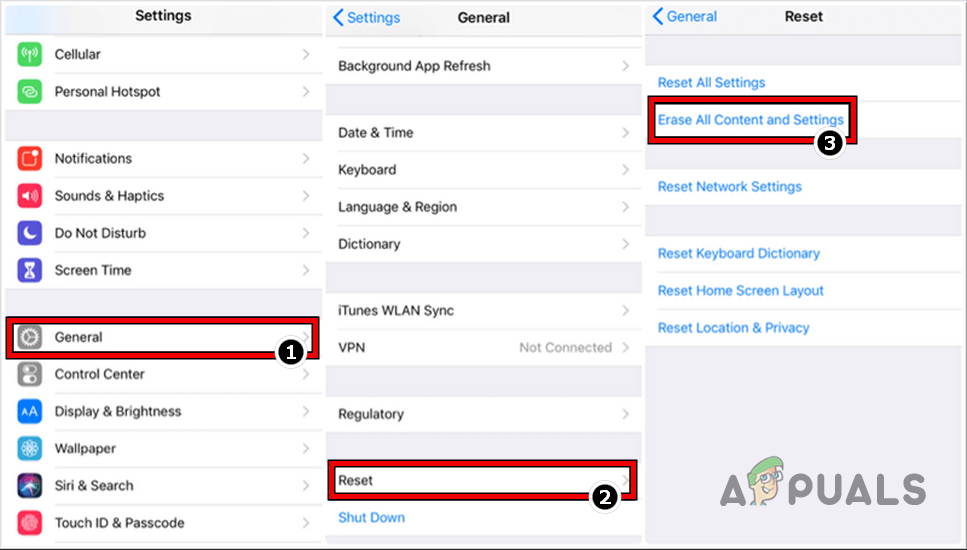
Reset iPhone to the Factory Defaults - Afterward, confirm to proceed with the iPhone’s reset process and wait till the process completes.
- Once done, set up your iPhone as a new device (not restored from a backup yet), and then hopefully, it will be clear of the WebKit internal error. If so, then you may restore your iPhone from a backup.
If none of the above worked, then you may contact Apple support to resolve the issue, but you may use another browser or device to access the problematic websites during that time.
 Reviewed by
Reviewed by 

